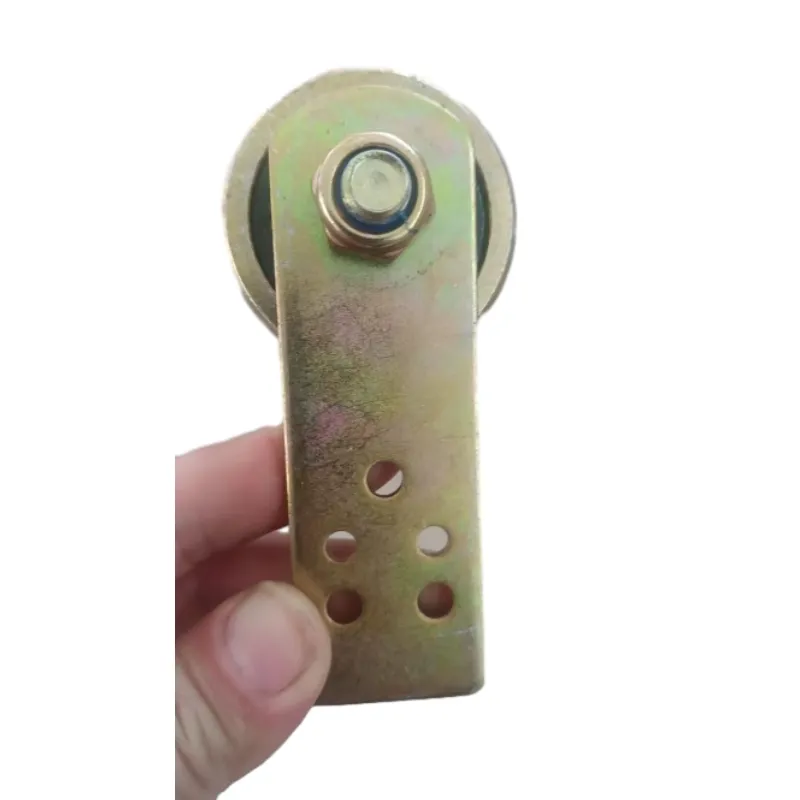
નવેમ્બર . 25, 2024 16:48 Back to list
6203 2rsc3 bearing
Understanding the 6203 RSC3 Bearing A Comprehensive Overview
In the world of mechanical components, bearings play a crucial role in ensuring the smooth operation of various machinery and equipment. Among the multitude of bearing types available, the 6203 RSC3 bearing stands out for its versatility and reliability. This article will provide a detailed overview of the 6203 RSC3 bearing, its specifications, applications, and advantages.
What is a 6203 RSC3 Bearing?
The 6203 RSC3 bearing is a type of deep groove ball bearing, which is one of the most widely used types of bearings in the industrial sector. The designation 6203 refers to the specific dimensions and load characteristics of the bearing, while RSC3 denotes its sealing and internal construction features.
Specifications - Inner Diameter (ID) 17 mm - Outer Diameter (OD) 40 mm - Width 12 mm - Type Deep Groove Ball Bearing - Seals The R in RSC3 indicates a rubber seal, which protects the bearing from contaminants and retains lubrication. - Cage Material Typically made from steel or polyamide, providing durability and resistance to wear.
Applications of the 6203 RSC3 Bearing
The 6203 RSC3 bearing is designed for a wide range of applications, making it a popular choice across various industries
. Here are some common applications1. Electric Motors This bearing type is frequently used in electric motors due to its ability to handle radial and axial loads, ensuring efficient operation. 2. Automotive Industry From wheel hubs to alternators, the 6203 RSC3 bearing is essential in many automotive applications, where reliability and performance are paramount. 3. Household Appliances Commonly found in washing machines, dryers, and refrigerators, these bearings contribute to the smooth functioning of appliances. 4. Industrial Machinery It is widely utilized in conveyor systems, pumps, and compressors, where durability and efficiency are crucial.
6203 2rsc3 bearing

Advantages of the 6203 RSC3 Bearing
Choosing the 6203 RSC3 bearing offers numerous advantages that contribute to its popularity
1. Durability The rubber seal ensures that the internal components remain protected from dust, dirt, and moisture, which helps extend the lifespan of the bearing. 2. Low Friction The deep groove design allows for smooth operation with minimal friction, resulting in lower heat generation and increased efficiency. 3. Versatility With its standard dimensions, the 6203 RSC3 bearing can be easily incorporated into various designs and applications, making it a versatile component. 4. Cost-Effectiveness The 6203 RSC3 bearing is generally affordable, providing a reliable solution for many applications without breaking the bank.
Installation and Maintenance
Proper installation and maintenance are essential for maximizing the performance and longevity of the 6203 RSC3 bearing. Here are some best practices
1. Correct Installation Ensure that the bearing is installed in the correct orientation and that it is properly seated in the housing. Misalignment can lead to premature failure. 2. Regular Lubrication Although the 6203 RSC3 bearing comes pre-lubricated, it is important to check and, if necessary, replenish lubrication at regular intervals based on operational hours. 3. Periodic Inspection Regularly inspect the bearing for signs of wear, noise, or overheating. Early detection of issues can prevent catastrophic failures and costly downtime. 4. Environment Consideration Ensure that the operating environment is suitable for the bearing's design. Extreme temperatures or exposure to contaminants can adversely affect performance.
Conclusion
The 6203 RSC3 bearing is an exemplary choice for those seeking a reliable, versatile, and cost-effective solution for various applications. Its robust design, coupled with the advantages of low friction, durability, and ease of maintenance, makes it a preferred option across multiple industries. Whether in electric motors, automotive components, or household appliances, the 6203 RSC3 bearing continues to be an integral part of modern machinery, contributing to increased efficiency and performance. Understanding its specifications, applications, and best maintenance practices ensures optimal functionality, ultimately leading to better operational outcomes.
Latest news
-
Spherical Roller Bearings Applications: Heavy Duty, Self-Aligning
NewsAug.30,2025
-
Premium Deep Groove Ball Bearings | High Speed & Reliability
NewsAug.29,2025
-
Durable Scaffolding Clamps - Secure & Reliable Tube Connectors
NewsAug.28,2025
-
Common Failures in Thrust Ball Bearings and Solutions
NewsAug.22,2025
-
How Tapered Roller Bearings Can Take Shock Loads
NewsAug.22,2025
-
Angular Bearings in High-Precision Spindles
NewsAug.22,2025
